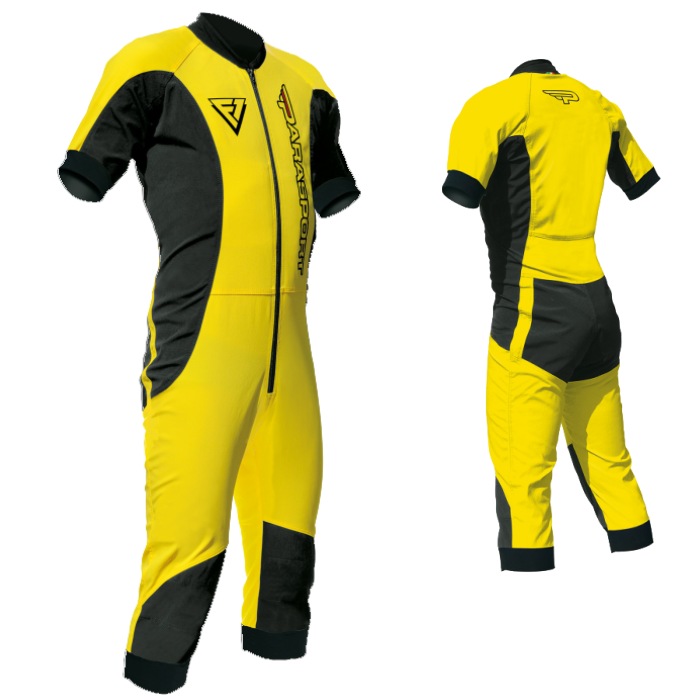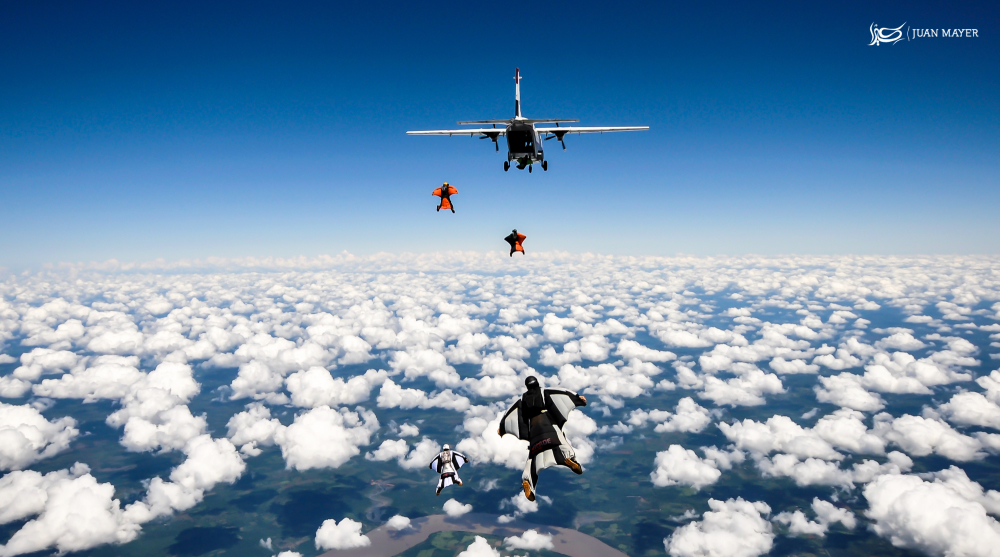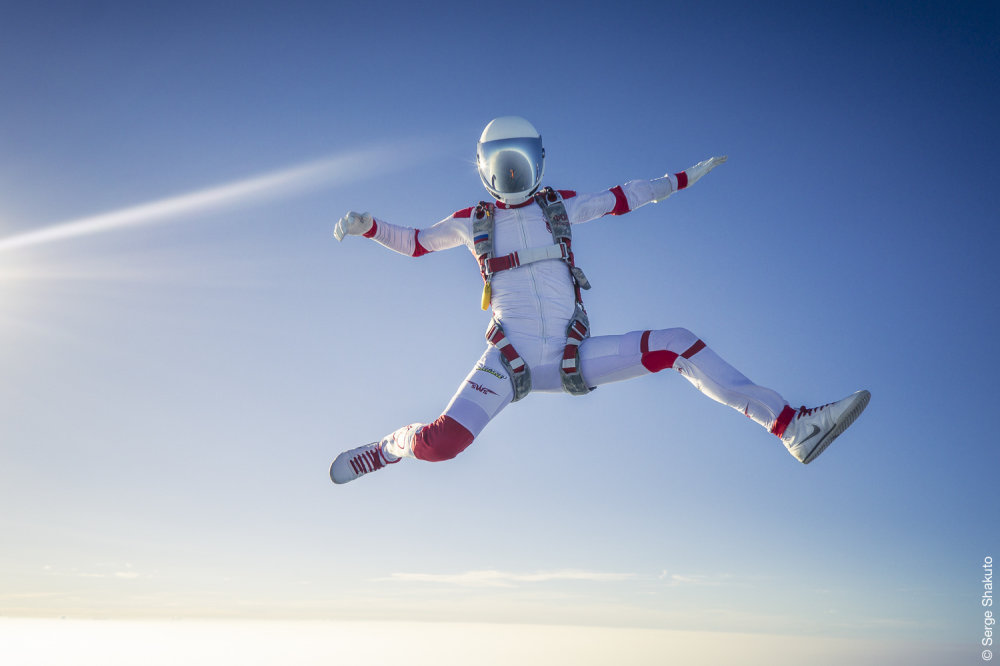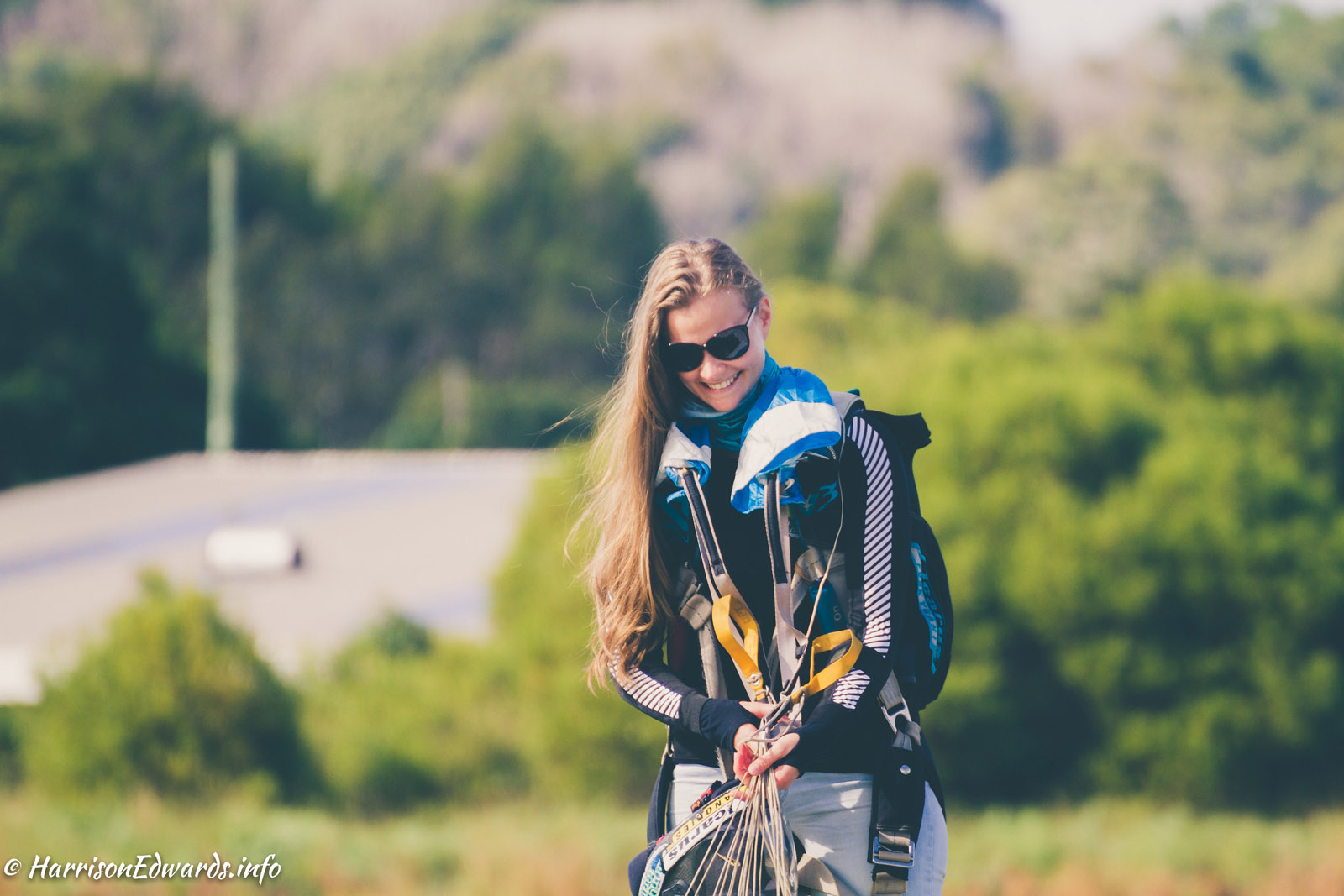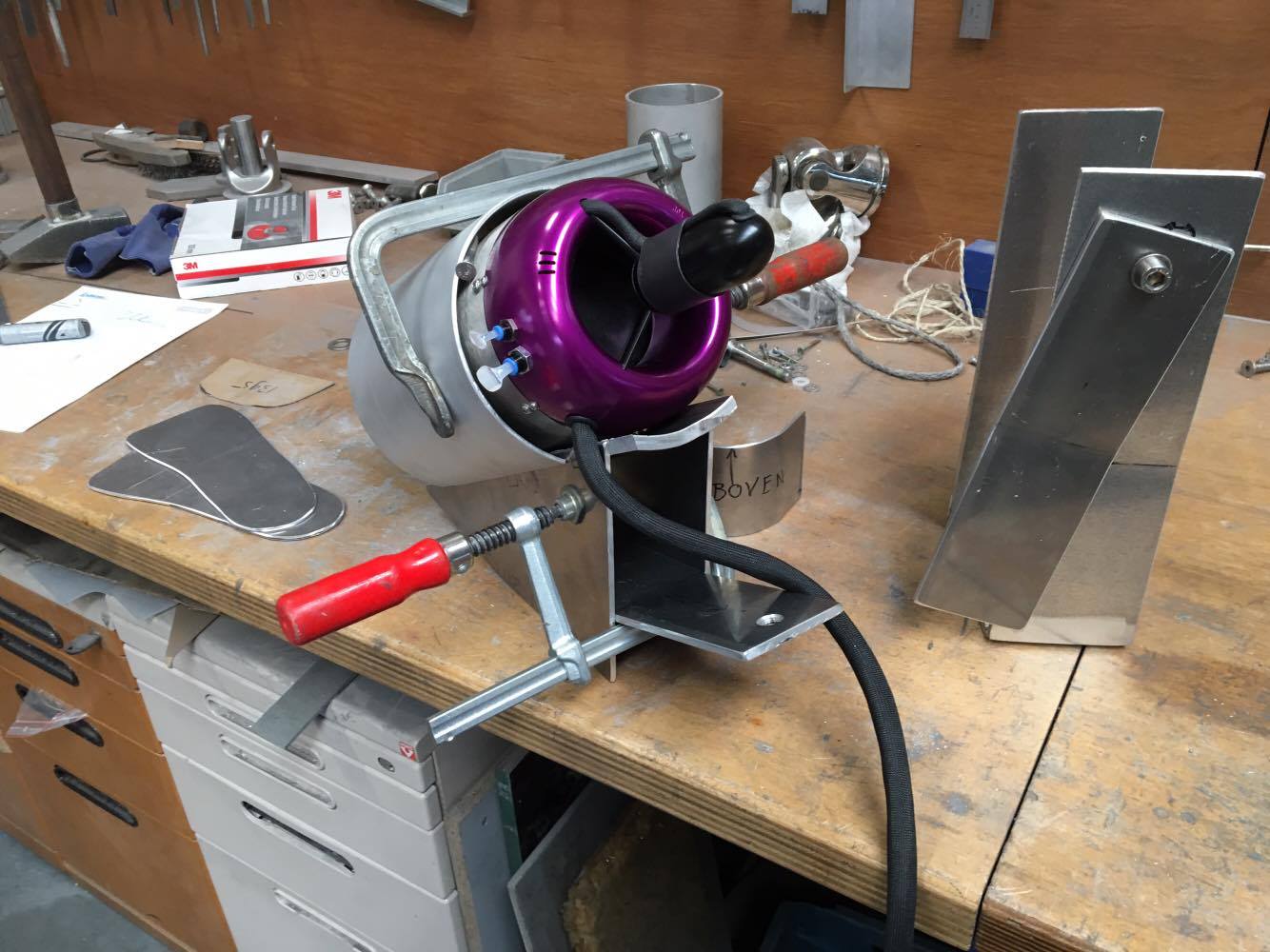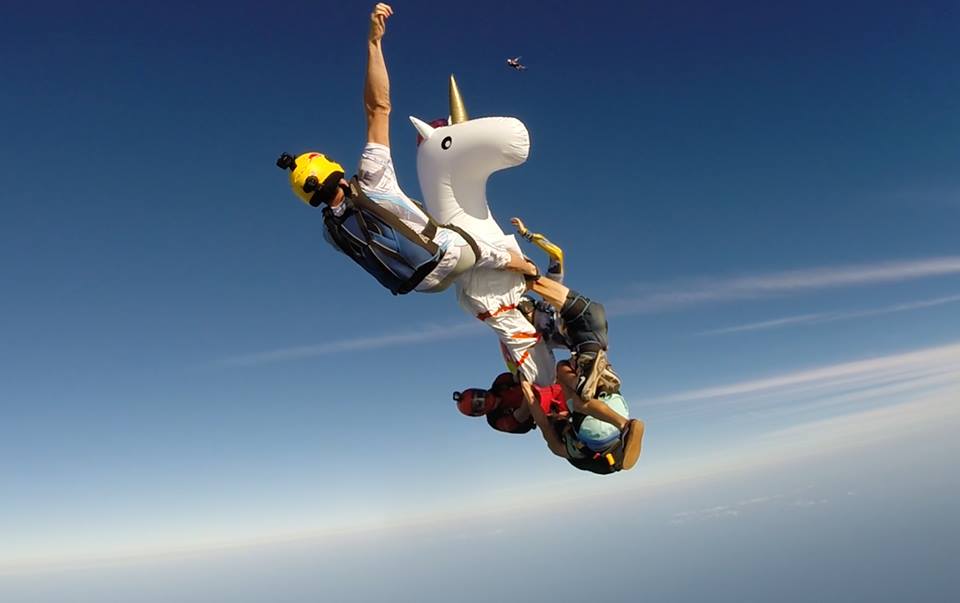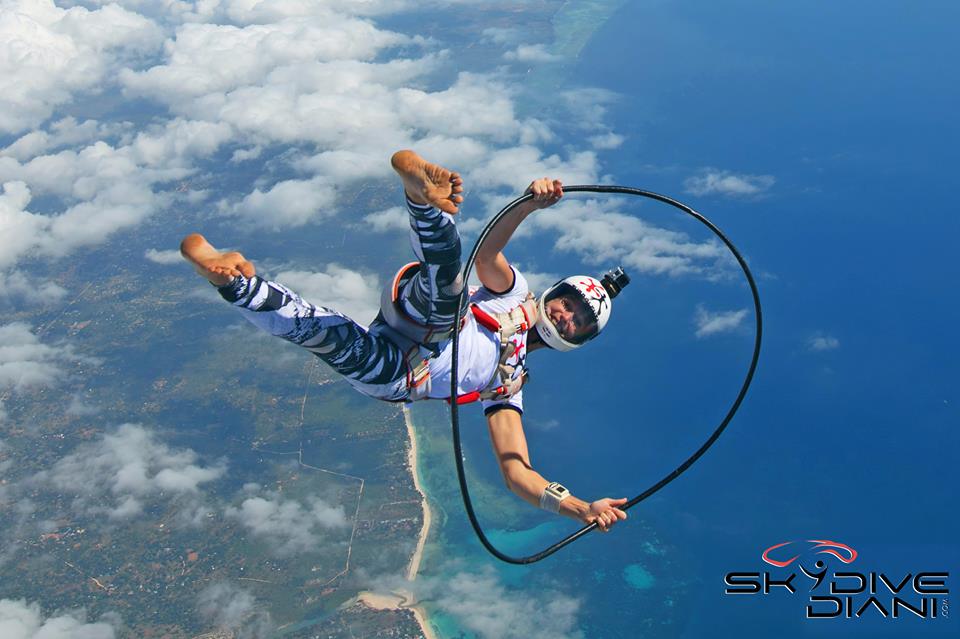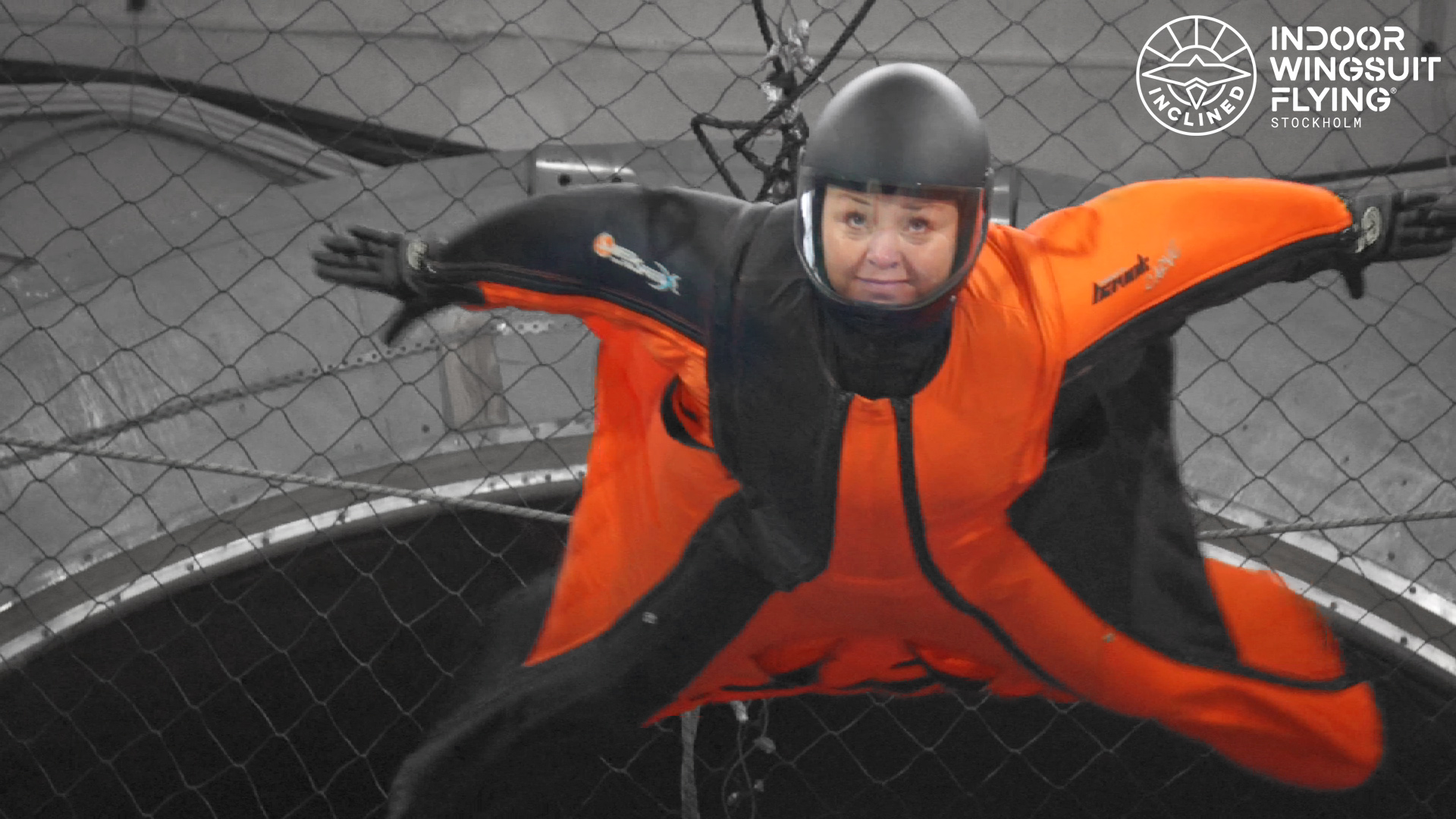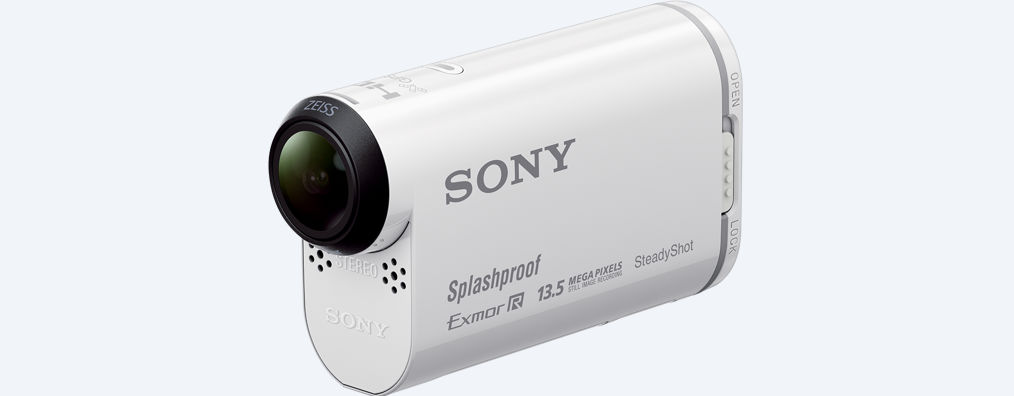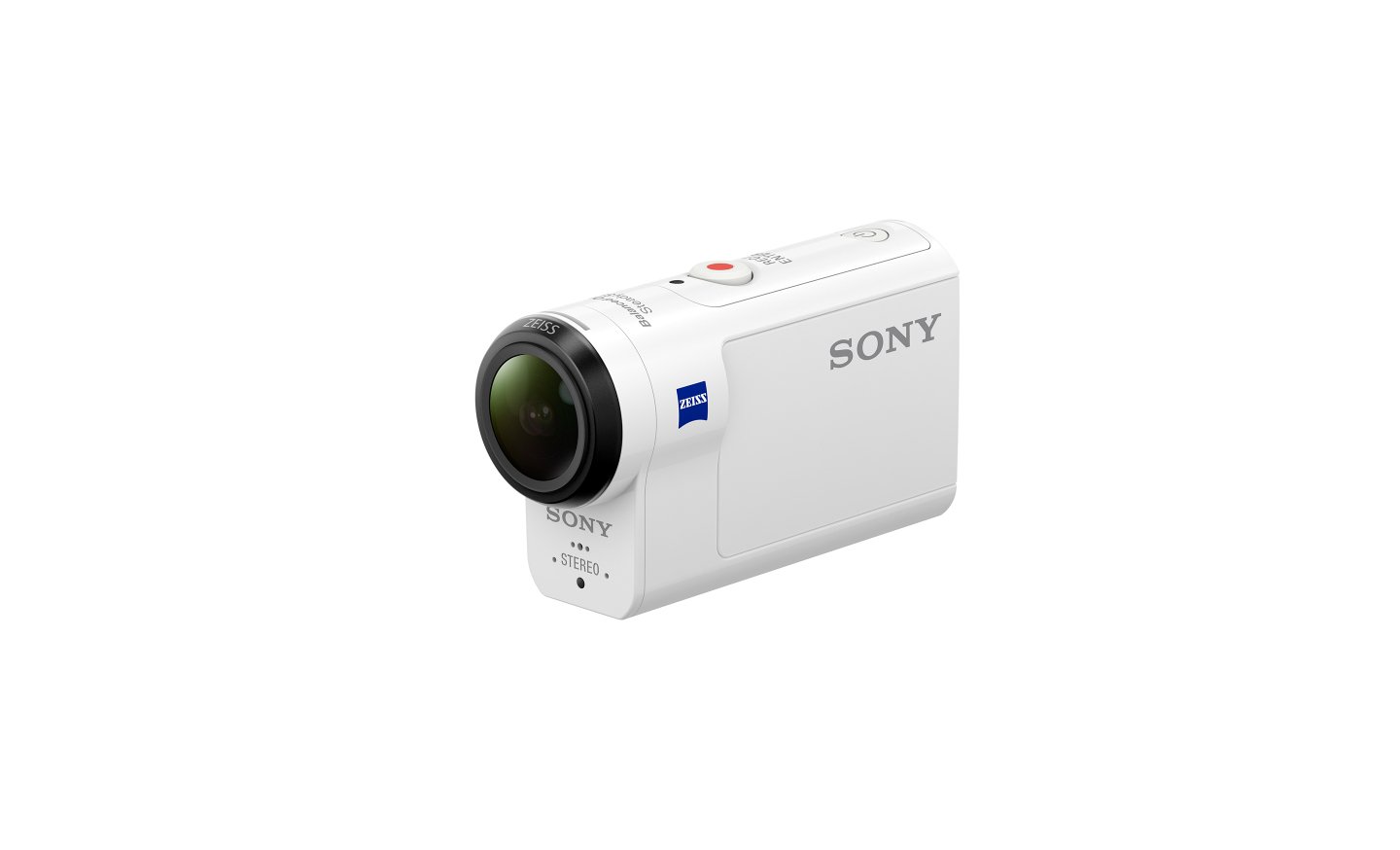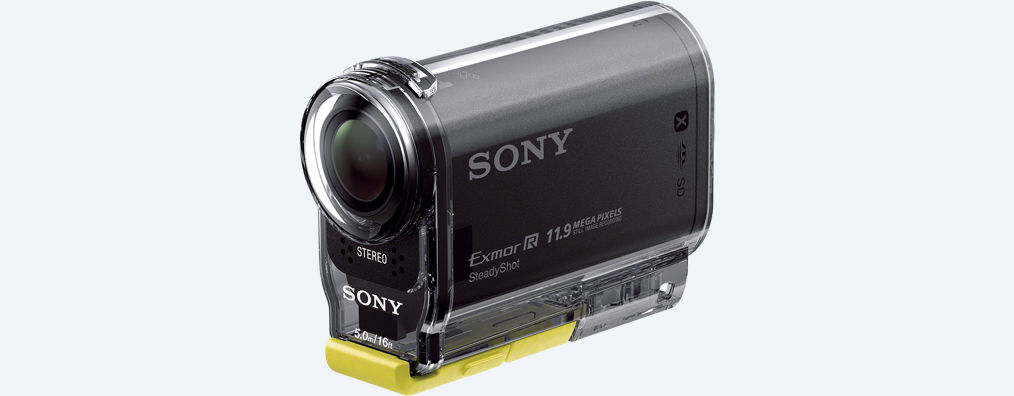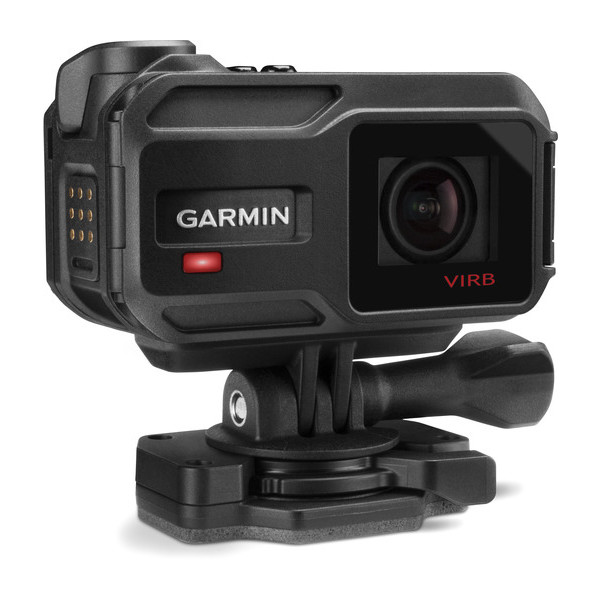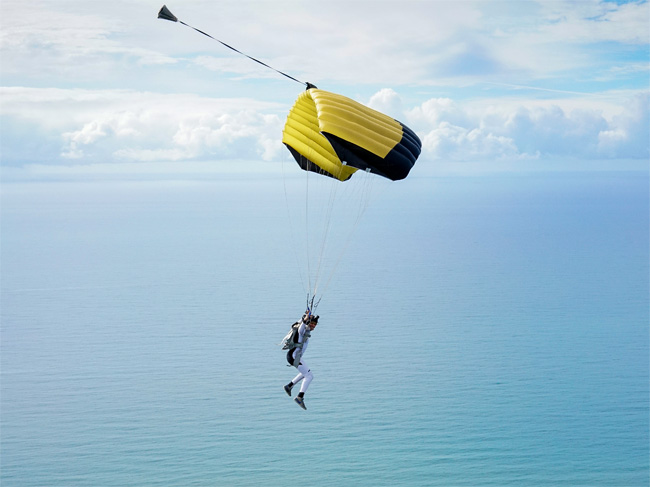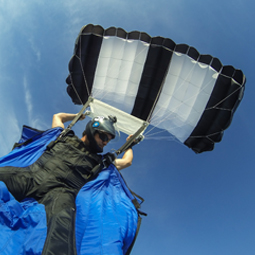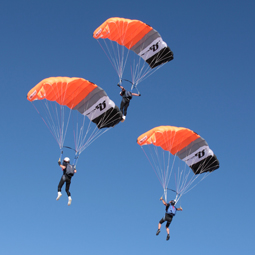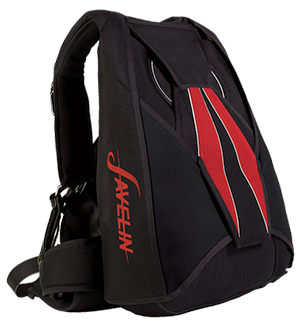-
Content
-14 -
Joined
-
Last visited
-
Days Won
1 -
Feedback
0%
Content Type
Profiles
Forums
Calendar
Dropzones
Gear
Articles
Fatalities
Stolen
Indoor
Help
Downloads
Gallery
Blogs
Store
Videos
Classifieds
Everything posted by admin
-
Cool and affordable. Perfect in hot weather, the F1 Summer is a lightweight suit perfect for a cool fit in all senses. Based on the concept of the F1, it shares the same ergonomic cut and strong fabrics, adding the tightly comfortable short sleeves and legs of the higher lever F3 Summer. A comfortable and fresh shorty suit without spending a fortune! The F1 Summer is all made of WindFlex, a 2-Way lightly stretch TACTEL® based fabric, combining strength and durability with superior fit and comfort. The Teflon® coating make the fabric breathable, but with some wind protection too. Standard features include: WindFlex fabric for comfort, durability, and performance Shaped cuts on knees and back Snap dot zipper lock Strong but comfortable elastic fabric on arms and legs Inner pocket Ergonomic cut of armpits Parasport logo embroidery F1 logo embroidery Standard colors Standard sizes Fast delivery times (average 5 weeks)
-
Holistic Performance Specialist Lucie Charping Talks You In Image by Juan MayerIn our last article, we met holistic nutrition coach Lucie Charping, who works with elite athletes to get them--and keep them--at the top of their game. Often, that game is an airsport. Here’s the continuation of our conversation regarding peak performance strategies for more “normal” airsports athletes, like you and me. (Spoiler: These strategies work just as well if there isn’t a charging bull on your helmet.) ALO: If going cold-turkey on every naughty item in your diet isn’t the way to peak performance, then what is? Lucie: Changes made little-by-little help an athlete increase awareness and get in touch with their body’s natural intelligence by balancing the systems that run us. In actual fact, we're healed by those same systems that keep us going, so--if you balance those systems, such as blood sugar and pH--you'll be setting yourself up for a broad spectrum of positive effects, healing from stress and sports injuries among them. Make better choices until you build the momentum that gets the pathways programmed. ALO: It sounds just like establishing a yoga practice. Right? As soon as you keep the promise that you're going to do it for five minutes, before you know it, it’s 10; 20; 40; 60... Lucie: Absolutely. People think it's matter of willpower. It’s not. It's really a matter of neurobiology--what's happening in your brain, what's happening with your biochemistry, your neurotransmitters, what's happening in your gut--that’s making the decision about what you're going to eat. You can’t fight your hormones. No matter how strong of mind you think you are, you're ruled by your chemistry. You are strong of mind because of your chemistry. So: If you get your chemistry in alignment, you’ve essentially learned to hack yourself. You can not only be happier, more effective, more creative and more motivated in your daily life--but if you’re the kind of person who relishes a heightened-stress, high-consequence situation like skydiving, tunnel flying, BASE jumping, etcetera, then you’ll get even more benefit from this kind of management. You’ll learn faster, you’ll have faster decision-making and you'll have more focus to excel in these unique sports with their unique pressures. Of course, I could say to you, “Here; go to the dropzone with this power-packed superfoods smoothie of maca and cacao with all these berries in it.” And it would be super awesome, of course; it’d give you a short burst of energy for a short amount of time. But it’s not sustainable to do that every time you go to the dropzone; every time you go to the tunnel. If you learn how to balance your blood sugar, you're going to have an abundance of energy for an extended amount of time, and you don’t have to plug a blender in next to the packing mat. ALO: Let’s talk a little more about energy. It’s a big part of airsports to manage your energy when you’re waiting on loads or tunnel rotations or weather, and a lot of airsports athletes struggle with it. How can this stuff help with that? Lucie: The peaks and valleys in these sports are quite steep. I see a lot of adrenal fatigue and overactive minds in the group of people that I work with. For this, I’ll use the term “extreme sports,” because these athletes like to push their minds and physiologies to the extreme. When you put yourself in a high-consequence or high-risk situation constantly, the chemistry that is firing in your brain is full of reward chemicals. It’s highly addicting. Over time, you reset your brain’s baseline for what it means to feel good. When you're on the ground or on the bench, those reward chemicals are not firing. So, what happens is--more often than not, and you can correct me if I'm wrong--we have major addictions in these sports. Not just to drugs, though that is certainly within the landscape. We have addictions to sugar; caffeine; tobacco; all kinds of stimulants, and you can see for yourself how people are having to use those things constantly between jumps and flights. It's not because the individual a yahoo; it’s because their baseline chemistry is telling them this is what is required for you to feel happy now. So, on the ground as an action sport or, say, “extreme sport” athlete--for peak performance, you must learn to cultivate that chemistry whilst not risking your life. And you do that with the food that you eat and with relaxation practices. You can keep your blood sugar level, which keeps your mind and body in a receptive state, then cultivate that satisfying chemical response through breathing. Then you won't have to reach for an energy drink every time you pack, bouncing from one coffee to the next, not eating all day at the dropzone and then binging whenever you manage to get home. Peak performance comes with time. And so, it’s interesting to note, does optimal health and weight, without calorie counting, or deprivation, or guilt. ALO: It sounds way simpler than I thought. Lucie: It’s not really simple, it’s elegant. To me, that's where the power is. If you want to talk about what is both the barrier and the bridge between business as usual and peak performance for airsports athletes, it’s a single path, and it’s not complicated: cultivating these practices of prioritizing your food so you balance your body's chemistry and practicing mindfulness techniques in order to bring a single point of focus to your mind. Not only do you get better at jumping and flying; you become happier as overall person. Your body is magic; it's magnificent, actually We often forget about that. But we never, ever should. ------ Lucie is based in San Diego, but travels to wind tunnels worldwide as the nutritional arm of Fusion Flow Retreats. To reach out to Lucie for a personal consult, pop over to her Facebook page.
-
Ultimate image stabilization from Balanced Optical SteadyShot Professional 4K with ZEISS lens and Exmor R CMOS sensorCamera control Splash-proof body or use incl. waterproof housing down to 197ft. Selectable viewing angle: Wide, Medium or Narrow and 3x zoomHigh quality 12MP still images and up to 10 fps in burst mode Interval record at 8.3MP for stills and 4K time-lapse videoHigh Quality stereo sound with wind noise reductionBuilt-in Wi-Fi, Bluetooth, NFC, GPS, HDMI, USB and mic jack Intuitive interface, 3x rec. lights and adjustable beep volume
-
Holistic Performance Specialist Lucie Charping Talks You In Image by Serge ShakutoLucie Charping grew up in the world of food and hospitality--but quite a bit more actively than you might imagine. She founded her first restaurant, in fact, at age 16. Lucie made the food-to-medicine connection early, too. Plagued by a variety of ailments throughout her childhood (as well as adrenal fatigue and a battle with anorexia, which almost killed her), Lucie healed herself through holistic nutrition. Eighteen years later, Lucie’s expertise centers on peak performance, sports injury management and plant-based nutrition--with a particular focus on lifestyle strategies for adventure sports practitioners, elite and Olympic athletes. I had the opportunity to pick Lucie’s brain about peak performance strategies for skydiving (and the shredding of tunnel gnar, to boot). Here’s what she had to say. ALO: So: tell us what you do! Lucie: I'm a peak-performance health coach. I’ve been a holistic nutrition coach for about 18 years. Originally, I worked exclusively within the Ayurvedic model--Indian medicine. These days, there is so much more western science and up-to-date nutritional information available, so I extended my practice to encompass it. The focus is two-pronged: first alignment, then optimization. Once you align your systems, the body can optimize. Most of my clients are adventure athletes of some kind who want to heal from their minor injuries faster; who want to be faster; who want to be clearer in their path towards performance in air sports and who want to have the mental energy that is takes to do these sports well. ALO: At what stage along this path do you usually meet a new client? Lucie: Usually, they come to me already having had an inkling of what needs to be adjusted. With a little bit of age and experience, top-level athletes--and people who want to become top-level athletes--discover for themselves the power of food-as-medicine to improve recovery rates, reduce inflammation, oxygenate more efficiently and focus better. Soon after that, if they’re paying attention--which they are, at that level--they realize that without using nutrition as a tool, they’re effectively shooting themselves in the foot. People come to me because they’re starting to realize how important it is and they want a customized, individualized plan of action--but you can do it for yourself, of course, if you’re willing to put in the research. You’d think that in top-level sports--airsports included--people would know what they need to know about nutrition. Unfortunately, they don’t. In order to be light and strong and focused, you need to eat and balance your body systems. ALO: Most folks that I know who do anything in the human-flight realm are under the impression that they’re doing pretty well, nutritionally. What’s the biggest problem you see with nutrition in airsports specifically? Lucie: In airsports, I come up again and again against the fact that people live predominantly on sugar. Soft drinks and lab-created bars are the major culprits behind the energy rollercoaster. Protein powders and bars replacing real food is a close second. There’s a perception that crap food is par for the course when you’re in the tunnel at 2 o'clock in the morning or out on a dropzone for the weekend--and then you don't know why you can't focus anymore, you don't know why you keep injuring yourself, why you're so frustrated all the time. It’s a matter of blood sugar and stress responses. Once you get your blood sugar and your stress responses under control, the training can rapidly come together. If you manage your body chemistry and your neurochemistry, you can absolutely catapult yourself. You can actually create an environment that sets you up for a state of peak performance--for a flow state. You can cultivate those states within your body, and how you do that is through your food choices and your relaxation practices. We all have these systems built into our bodies; we just need to learn to use them properly. There is a lot of science on this now--about how food choices and relaxation practices can optimize your learning rate; your motivation; your creativity; your focus. You can halve your learning time, for instance. The benefits are across-the-board. ALO: Let’s take a look at your typical skydiver. By that, I mean somebody in their late 20s to mid-30s who thinks that they eat pretty well, but definitely drinks socially--and probably has more quote-unquote “cheat days” than they would care to admit. This hypothetical jumper is starting to feel their age kicking in; starting to feel a little bit less, shall we say, unstoppable; starting to get the little nudges from their body that say something needs to be changed. What are the steps that you first recommend to that person? Lucie: The first thing I ask is simple: Are you eating enough food? Because in airsports--as in most sports--athletes don't eat regularly enough to balance blood sugar. Hangriness is hypoglycemia, which is crippling to an athlete. You can easily manage your blood sugar with plant protein and fiber (for example: hummus and carrots), even while you’re moving quickly at the dropzone. No matter how transient you are, you must think am I eating regularly enough and is my blood sugar stable. That’s step one. ALO: So you’re not telling people to drop everything and go raw vegan. Lucie: Absolutely not. I don't actually agree with that, anyway. I think that a whole-food, plant-based diet is the way forward for health and performance--but, as a coach, you have to meet a person exactly where they’re at. I can prescribe my perfect formula, but it will be a set-up for failure if the athlete can’t or won’t adhere. ----- Next week, Lucie talks about her favorite strategies to make that plan and stick to it.
-
Jill Grantham is a travelling gypsy from Australia with 1900 jumps and 12 years in the sport. She has hair like Rapunzel, a penchant for lords and ladies and is as sweet as her favorite candy. What is your canopy flying experience? I have historically been a consistently terrible canopy pilot due to low confidence (slid in on my butt for 11years). Before I got Lady Safina (my new Safire 3 129 from NZ Aerosports) I was flying a Safire2 139, for 800 jumps. I have now done about 150 jumps on Lady Safina at a bunch of different dz’s with weather etc. But I am loving flying this canopy. Lady Safina, how I love thee, let me count the ways: Amazing flare! No matter what sort of things I do with regards to my landings (I’m currently learning to do a front riser approach) there is always a good enough flare to stand me up. This is giving me the confidence to try and progress to higher speed landings rather than straight ins and not worry about getting dumped if I come out too high. Slightly easier to get on the front risers Slightly faster opening than the Safire 2, which is not too fast and helpful to not be hanging up a slow opening canopy in amongst traffic. More responsive to harness turns. Feels more solid in bumpy wind conditions Heaps and heaps of range to get back with the rears from a long spot. Plus she is really pretty.Is there anything you don’t like about the Safire 3, sorry, Lady Safina? She is a Beta test canopy that was built for me before the Safire 3 was released to the public. I was having inconsistent openings to begin with. After filming some openings and sending some feedback a mod was made to mine and all subsequent Safire 3 models - and now she opens great! What do you notice different in the Safire 3 to your previous Safire 2? I feel like the Safire 3 is just overall more responsive. I definitely feel like I am more in control and can actively fly her. We work together a bit more. With the Safire 2 I felt more like a passenger. Could have been the difference in size a little too of course! The rears are better for getting back from a long spot and the fronts are a bit easier to get on than the Safire 2. She still pulls out of a dive pretty quickly - you can’t hold the fronts down too long before they’re pulled out of your hands. Who is the Safire 3 suitable for in your opinion? I think she is suitable for beginner and intermediate canopy pilots. Especially good if you are a bit nervous or don’t want to push it, you can have a lovely safe easy flight to the ground. You have heaps of range to set yourself up in the pattern, which helps you not become cornered by having too small or too big a canopy...and if you don’t want to do much other than float down softly it will allow you to do that. If you do want to start flying it more, and seeing what you can do with it, then it is a really responsive wing and awesome to try out some new things on. But because the flare is so good it doesn't matter soooo much if you don’t nail the landings while you’re learning, because the canopy sort of fixes your little mistakes up :) What's the main benefit or advantage to you personally of having a Safire 3 rather than another canopy? Aside from her being the prettiest Lady I have seen? When I’m flying her I feel comfortable enough that I can choose what is appropriate for the situation and group and fly her how I need to to be safe and keep everyone else safe too. The increased responsiveness and flare have made me confident to try more when flying her. She has really changed my attitude towards skydiving. I feel more in control of how I am flying her rather than feeling a little bit exposed to the elements. She is basically all those empowering girl songs in canopy form!. ** Jill Grantham received early access to the pre-released version of the Safire 3 gratis from New Zealand Aerosports. The article above was Jill's unpaid opinion on her experience with the canopy.
-
As one of the most experienced pilots in the world, Jarno McCordia is continually involved with things at the pointy end of wingsuit flight. Following on from providing details about the new wingsuit tunnel in Stockholm, he shares some information about a more personal project that aims to answer a question that continually bothers us as humans: “What happens if we strap rockets to it?” “In a way this project started back in 2005 when I first saw Finnish wingsuit pilot Visa Parviainen experimenting with the first set of small jet engines. I had been involved in helping him with some media stuff around 2010, and at that point it really sparked my interest. It had always been a secret longing, but at that point I really got inspired to try and turn it into a reality.” “Every wingsuit pilot dreams of flying with unlimited range and power - to turn yourself into a true flying machine. Visa took that and turned it into a reality. He worked for years to develop the idea, logging longer and longer flights, aiming for level flight and then the ability to gain altitude.” While Jarno concedes that other high-profile projects that utilise similar technology have helped to draw attention to his plans, it has taken a lot of work to get it up and running. ‘It took quite a few years, and many dozens of sponsor proposals to finally get the project of the ground. At the moment we are midway into construction on the fuel setup and engine mounts, our software engineer is almost done programming the custom onboard computer that will control and monitor the engines, and provide various safety features related to matching thrust and (automated) startup and shut down sequences.” “Engine technology and wingsuit design have both come a long way since Visa's first flights over a decade ago, and it is going to be exciting to see how far we can take it. We have a team of aeronautics designers helping with the engine mounting and fuel setup, and experts in construction making the gear. Visa himself has been involved from the start, providing us with a great deal of knowhow and practical information - as well as showing us his setup and design ideas.” Unlike the various rigid wing systems we have seen over the years, your plans appear to utilise fairly standard wingsuiting gear. What have you had to adapt? This is one of the main goals for the project. I’ve surrounded myself with a lot of experts in various fields and we are trying to design a set of gear that can be added to any normal wingsuit/parachute system. I will be using a bigger canopy due to around ten kilos of added weight I will have on landing, but thanks to recent advancements in ultralight fabrics and canopy design it will fit into my normal rig. So when can we all have one? I am not sure that buying a jump ticket and getting on a plane with a tank of Jet A1 strapped to your back and engines blasting super heated exhaust at 600 mph will ever become standard, but for me this is a dream project and I'm trying to get as many knowledgeable and skilled people as possible involved to help it become reality. An important personal goal is to develop a system that is as safe and easy to use as possible, and I think approaching the design process from the point of view of that anyone should be able to use it is a good place to start from.” How long until we can expect to see you in the sky? “We do have a date we're aiming for in terms of the first flights, but we are keeping that off the record for now. It is crucial to let safety, finalised designs and a thorough testing process dictate when we a ready to go. My biggest wish for the whole project was to make it safe, accessible and of course as awesome as can be.” Project manager & Pilot: Jarno Cordia Made possible by: IGOFX, AMT Jets, Phoenix-Fly Programming & Technical Setup: Martijn Decauter Technical Realisation & Construction management: Jean-Louis Becker / NL Ballon Aerodynamics Design, Tunnel Testing & Support: DNW Aero
- 5 comments
- 1
-
- interviews
- interviews
-
See more
Tagged with:
-
Continued from Part 1 Steady and organic as it has been for three years running, the growth for this particular event is a little more along the “exponential” lines. The biggest boogie Diani had seen before this particular crowd descended was made up of around 30 people; today, almost a hundred jumpers are thronging about the place. They’re poured out in ones, twos and threes on the pillows heaped on princely carved daises. They’re queueing up for smoothies at the bar--a converted Volkswagen bus, painted a cheerful robin’s-egg blue. (The van’s side roof has been removed to reveal a seemingly indefatigable blender and its winking operator--Jimmy, a Kenyan with light eyes, a quick wit and international schooling who’s just about to start on his helicopter pilot’s license.) Two dropzone dogs chase wayward monkeys up the treetrunks. A local taps an endless stack of coconuts with his practiced machete, revealing the restorative nectar inside for the jumpers rustling back in from their beach landings. A dozen packers, tidily kitted out in their official Skydive Diani shirts and swoop shorts, busily compress a steady stream of nylon under thatch roofs. It’s busy here. Not too long ago, this wide lawn would have had a population of perhaps four, give or take--and, reliably, one of those residents would be Ingvild Finvåg. Ingvild’s Viking-blue eyes and honey-blonde, Disney-princess locks announce her provenance with rigorous clarity, even if the mildness of her Nordic lilt does not. Her polished manners and peach-cheeked smiles belie the steady, bulldog resolve that has placed her squarely next to Gary at the heart of the Diani operation. Ingvild did a handful of skydives in her early 20’s, but it didn’t quite take. Seven years later, she moved to Mombasa from Oslo to work the volunteer circuit; this time, it snagged her thoroughly. She landed from her first Skydive Diani jump and essentially never left. Ingvild started her AFF in earnest a week later, logging a hundred jumps within that first season, then quickly going on to earn her TI and AFF instructor ratings. As it turns out, hers was one of the first tandems Skydive Diani had ever done. “I just hung around, jumping all the time, and built up jump numbers,” Ingvild remembers. “I just wanted to be around the drop zone.” Ingvild initially picked up a gig as the dropzone’s marketing liaison; now, she’s General Manager. On this particular afternoon, she’s ensconced at the front desk, working out the details of the catering for tonight’s Christmas party as she scruffles Bonbon, her roly-poly, lambswool dog. Next to Ingvild, Aaron Kitchener--an old friend of Gary’s, who co-runs his Kenyan security firm--is pitching in to run the manifest and make sure the bottomless coffee and tea urns stay full. When the final load goes up, Aaron ambles out from behind the desk, summoning the ground crew to help him unbox, unwrap and light dozens of oil lamps, all in the DZ’s signature blue. By the time the sunset load comes whooping down, the lamps are casting warm pools of light at the feet of the lawn’s tall palm trees, guiding the way to the free beer. If this isn’t paradise, I don’t know what is. We hear the Christmas party before we see it. Kenya Defence Forces Parachute Display Team by Joel StricklandAs we stroll down the long driveway towards the boutique hotel Gary and Ingvild have arranged to host the shindig, the happy chitter of a hundred giddy skydivers comes through the trees to announce that we’ve come to the right place. When we enter the venue, we’re stunned: this is an actual-factual Christmas party, not a cobbled-together skydiverly simalcrum. It’s a pressed-tablecloth affair, with roses and candles and African-themed Christmas crackers at every place setting. Skydivers swish about in showy dresses and ironed collars. Solicitous waiters work their way through the constellation of tables like fish in a reef, wine bottles dipping this way and that. We’re seated with the Kenyan Defense Force parachute demo team, a decorous foursome who, as we draw them out, set about showing us smartphone photos of their farms and families. We work our way together through a splendid little buffet, watching luminarias twinkle around the pool as we tell our stories. As we tuck into our Christmas pudding, a representative of the Kenyan Civil Aviation Authority makes his way to the front stage, attired in what must be his full traditional kit. As he sings the dropzone’s praises and hails the rich future of Kenyan airsports, jumpers pepper his speech with happy hoots and hollers. The phenomenon seems a little new to him, but he rolls with it, eventually passing the mic to Gary, who delivers an emotional brief history of the place before introducing a live band. In a handful of minutes, the dance floor is pumping and the pool is splashing. At one point, Jarrett Martin takes advantage of a suitable path to take a flying roll into the deep end. By the time I call it a night, I’ve already written off tomorrow morning. Fair play. Image by Mikael SoderbergIt’s certainly not the only morning that we happily write off over the course of the ten-day event. Gary and Ingvild have planned get-togethers for every night we’re together there, and none of them are missable moments. From the outdoor cuddle-puddle movie night to the jump-in “invasion” of the island at the far border of the marine reserve, these are one-event-per-boogie special, but they’re happening every time the sun goes down. There’s the pizza night at the fancypants resort down the road, for instance. After we pass through the massive wooden gates, staff in crisply pressed uniforms with crisply pressed hellos lead us past a succession of rose-petal fountains. Somewhere back beyond the second or third swimming pool, we’re established family-style at long tables and presented with pizzas that would pass the muster of any Italian expat. Someone unfurls a projector screen and hits play on the day tape, which revolves on the axis of some gorgeous flying by Airwax--the French team--as they spin around the tropospheric ballroom with consummate grace. The dazzling footage has the knock-on effect of reminding us that we’re here for skydiving, after all. Several of us immediately order water. On another evening, we pile into the Dornier for sunset inhopps to the Tiwi rivermouth. The takeoff timing leans heavily towards the late side for this strictly VFR airstrip, so we hardly get a peek at the low, golden sprawl of Mombasa and its interwoven estuaries before we’re scrambling out the door. The exit rush and the sudden fall of darkness has me a little discombobulated when I land, so I’m nowhere near prepared for what happens next. As I’m scrabbling up my lines and putting together what just happened, a group of Kenyans marches up from the treeline, surrounding me and the jumper I landed with. Dozens of them. Before I can respond to their sudden arrival, they start singing. And hugging us. And hugging each other. And dancing. And suddenly, we’re spinning in a vortex of big gospel voices, heads thrown back, pouring bouncing, burnt-sugar Swahili into the twilight sky. They eventually let us go after hauling us back in for just one more selfie; just one more enforced nuzzle into a rotund grandmama’s rooster bosom; just one more high five for somebody’s shy preschooler. They wave until we’re hundreds of feet farther on our way towards the barbecue Gary and Ingvild have set up on the banks. As I tromp through the rivermouth dunes towards the glow of headlights and smiling faces, I can’t help but thinking there’s no place like this one. I can’t help counting the days until I return. And next time, I’ll order extra toast for the monkey. Originally published in Blue Skies Magazine
-
“Hey!” The monkey freezes, holding two pieces of toast overhead like semaphore flags. For a moment, nothing happens. We just stare at each other across the patio table: two primates who want breakfast and are a little startled to find that someone with overlapping priorities has added complications to the goal. For a moment, I think he’s going to set them back down, pat them reassuringly with his long, delicate hands and cast a fulsome grin over his shoulder as he saunters bipedally into the bushes. Instead, he lets loose with a cowabunga screech when I start to rise, tucking both slices under one lanky arm as he uses the other to facilitate an impossible leap to the roof above my head. Once up, he pops his face back over the edge. I’m quite sure he winks. He then chitters his way into the enormous baobab that overhangs the packing huts, clearly satisfied with himself. My companion at the table pours himself another cup of tea, orders more toast and pats his forehead with a napkin. The first load of the morning is on a 30-minute call, but we’re already tugging at our collars. Diani snuggles the equator, so the seasons don’t dance a spring-summer-fall-winter foxtrot; it’s either pretty hot or really hot, and it’s pretty darn hot already before 9AM on this early-December day. The pressing swelter is making us pay for last night, which was spent at the beach bar next door, with several bottles of Tusker and an ill-advised shot of tequila or two, chasing crabs through pools of lamplight on the velvet sand. The heat blossoms up, up, up from where we sit in the sultry seaside jungle, pressing long thermal fingers through the troposphere, summoning a shoulder-to-shoulder crowd of cumulonimbus calvus. These puffy troops stand a daily watch along Diani’s ribbon of powdered-sugar sand; along the impossible blue of the Indian Ocean. Similarly reliable, Kenya’s coastal wind system pumps as reliably as a healthy heart. It pushes consistently and directly down the twelve-mile-long line of the beach, day after day after day. When the ten-minute call goes up, I set my remaining toast back down and smile. It’s time to go play. My companion and I wiggle into our gear and make our way to the dropzone bus, relishing the little puffs of air conditioning that emit from the ceiling vents. Once our motley bunch of boogiers have boarded, we’re underway: two French freefly medalists, fresh from the Mondial; a South African dropzone owner watching his clever daughter giggle her way through AFF; my curly-haired companion, a beguiling Briton who has taken national gold in freefly and freestyle alike; a Russian instructor who has probably never once frowned; Diani’s resident TIs, who look like two different artists’ renderings of Peter Pan; an international assemblage of fun jumpers, representing a comprehensive gamut of languages, disciplines and gear loyalties. As we cobble together an exit order, we scratch down the gravel road from the stately white house and grounds that comprise the dropzone, starting what I can only properly describe as a ten-minute summary of the African experience. The road between the dropzone house and Diani’s Ukunda Airfield is about four and a half kilometers long. That four and a half kilometers starts in earnest with a paved, two-lane road, lined by crayon-box craft stalls and criss-crossed by vervet monkey families. Exuberantly painted tuktuks (“JESUS LOVE! WU-TANG 4EVER! BIG DADDY!”) blast past the bus, signs proclaiming their three-passenger capacity partially obscured by passenger number five’s arm, leg or shopping bag. When we negotiate the sharp turn onto the airstrip road, we’re greeted by a gaggle of tiny children in baggy school uniforms, howling and waving at us through the windows as we bump along. Shiny babies peek shyly from the backs of their mamas who, draped fastidiously in the sherbert wraps of their kikoy, walk with the lulling, rolling cadence of hips that have never been parked at a desk. Imminently pregnant cows march, at their kid shepherd’s behest, to match our forward movement as we pass a series of crumbling tin-roofed shops selling peanuts and airtime; a mission schoolhouse; a braiding salon comprised of a single pink lawn chair; a toilet plumbed directly into the middle of an open yard; a throng of shoeless teenagers in Chinese G-Star polo shirts, singing. The bus driver tries to hurry. I want him to slow down. Once we’ve passed the stern-faced airport soldiers and have bundled out of the bus, I lean down to firm my shoelace ties. I’m jostled by a woman dressed in her shiny-shoed Sunday best, as is often the case in Kenyan airports. She has wandered over to poke at the rig on my back. “Is this a parachute?,” she asks, as I weave to avoid a more comprehensive probing. When I answer in the affirmative, she shakes her head and smiles the wide, crinkle-eyed, hakuna-matata smile that seems to be the Kenyan default. “Say hello to God for me,” she says as she wheels her carry-on through the doors of the tiny terminal. As I try to figure out exactly what she meant by that, I hear the Dornier spin up. Another Diani day has officially begun. Skydiving, as you can see in the faces of the locals, is a relatively new addition to the list of activities on offer at Diani Beach. In fact, as of my first jump at the dropzone, it had been three years almost to the day since Skydive Diani first opened its doors. Though the country’s history in skydiving goes back a decade, Kenya’s skydiving scene had been categorically temporary--a week-long belly boogie, here or there, hosted from borrowed safari bushplanes in different parts of the country. In 2012, a square-jawed British expat named Gary Lincoln-Hope ended up at one of these boogies--which was, fortuitously, taking place in Diani. Gary did his first tandem at age 16. He joined the British army soon thereafter, as a commissioned officer in the parachute regiment, traveling extensively in the process. Though circumstances and conflicting responsibilities prevented him from going through his AFF while he was in the army, it was his first priority when he matriculated. The new skydiver founded a London-based security company and jumped faithfully all weekend long, every good-weather weekend. When he decided to expand his security business to Kenya--a country he’d fallen for during the course of several army training jaunts--he didn’t want to stop jumping. “I had been in Kenya for a little when I happened to come to that boogie,” Gary explains, “And I really enjoyed it. It was a huge buzz. I just knew that there should be a drop zone here in Diani. It didn’t hurt that I was really missing skydiving, because there was nowhere to do it in Kenya and I was based in a place with nowhere to jump. Luckily, I was quite entrepreneurial back then. I didn’t really know anything about skydiving, but I had set up a business here and in the UK, and I reckoned I could make it work.” Within months, Gary found the house, sourced a 206, rushed through some documentation, put the proper requests through to a somewhat baffled aviation authority and--four weeks later--found himself the proud operator of an active dropzone. By the time 2012 was out, it was all systems go. At the time Skydive Diani opened its doors, Gary himself had 300 jumps. Several thousand jumps and all their instructor ratings later, Gary and the team find themselves flying multiple aircraft from the cute to the huge. “Skydive Diani was always intended to be a place to go to jump for fun,” Gary insists, “Fun is now and has always been at the top of the agenda.” “I didn’t do it to make money,” he continues “I did it because I wanted to skydive on weekends. But I got a couple of willing tandem instructors to come over. Business was slow at the start, because the difficulty in Kenya is you are not selling tandems; you are selling the very idea of jumping out of a plane.” “During that first four months,” he continues, “I was jumping every single load, just to build up my own experience and jump numbers so I could through the rating courses. It’s been a long road, but it has steadily, organically grown to what it is now.” Continue reading part 2 Originally published in Blue Skies Magazine
-
With more than four thousand jumps over the last fourteen years, Jarno McCordia is one of the most experienced and highly respected wingsuit pilots in the world. Here he joins us to discuss a couple of upcoming projects from the pointy end of wingsuit flying. First up is a look at the soon-to-open indoor wingsuit facility in Stockholm. Towards the end of 2016 footage began to emerge of an angled tunnel facility in Sweden where some ambitious aeronautical engineers have been conspiring to do for wingsuit flying what vertical wind tunnels have done for our skydiving skills - change everything. Brought quietly onto the project in early 2016 by the founder of Phoenix Fly and wingsuit development grand wizard Robert Pecnik, Jarno immediately saw the potential: “The whole thing was already underway a fair bit when I got involved in an active way. Secretly Robert had already been working for almost a year with the team behind the technology to realise the project. The first test flights had already been done when I was invited to come take a look at the flying and help assess things - mostly from an instructional point of view but also to see how far we could push the flying. Normally a lot of the development and testing we do together is open and shared process - so to have Robert tell me he had some news but couldn't show me anything until we met in person made me suspect it was something big.” “The flying I saw at that point was just steady cruising, but it immediately made me realise what I was seeing and the potential of how it could change the sport in a similar way that indoor skydiving transformed Freefly and FS in terms of skills and training.” Many disciplines within skydiving are evolving quickly and wingsuit flying is no exception. Suit designs are continually updated as our methods are refined and our abilities better understood. Steep and fast is the way to maximise the potential of a wingsuit - but getting it right takes time. How does the tunnel work and what have you learned about the instruction process so far? “The whole tunnel chamber is a moving structure of which the angle can be altered from pretty much flat to almost vertical. This ability to do this gives us a glide ratio varying from 1:1 all the way up to 3.65:1 (comfortably more than the sustained full glide on high range wingsuits) and the controllable speed of the tunnel is from 0 to almost 300km/h. Balancing these two factors means the tunnel is able to match the glide angle and for the suit one is flying and be appropriate for the skill level of the pilot. We have looked a lot at the teaching technique for beginners as we see that as being a significant percentage of customers. Experienced wingsuit pilots will also need to learn the basics first so that was an important area to focus on.” The indoor skydiving industry has a complex system of managing students abilities while they are training developed over many years . With good quality instruction accidents are few and far between but there is still some inherent risk. What have you learned so far about keeping people safe? “In terms of spotting and safety, procedures will vary a lot from what people are used to. I cannot go into to much detail yet due to a pending patent, but there is an assisted flight system that holds the student in a central position in the tunnel. There is free range of movement in all directions but only up a certain degree. In a similar way to how a seatbelt works, any rapid movement towards the ground or the walls is halted in a gentle way. Once pilots reach the stage where they can fly around free without any assistance it will be possible to get into close contact with the floor and walls, though experience has shown that the lower windspeed and design of the tunnel make those situations a lot less severe than one would expect. I’ve been practicing some quite aggressive acrobatics and of course it does not always go down without a hitch, though due to the padding and angle of the chamber you never really hit hard and you get gently rolled down to the floor - feet first.” “Initially there is something very intimidating about flying in a confined space but it pushes the accuracy and precision of your flying to a new level. It has definitely helped me realise how much further we can develop the precision of our flying. Even in the smaller test setup we have been flying 2-way and performing advanced acrobatics. Once the full-scale tunnel opens in September the possibilities are limitless - we are already going to host the first indoor acrobatics competition in December. LT1 is currently scheduled to open in September 2017. You can read more about the project and the history of the facility here: https://flywingsuit.se/
-
Make shooting more fun with a smaller, lighter Action Cam with a splash-proof body. The Action Cam Mini is two-thirds the size of previous models, but still captures high-quality images and sound thanks to an Exmor R® CMOS sensor, BIONZ X™ and XAVC S recording. So grab your gear and get ready to enhance your movie-making adventures. 11.9 MP (effective) Exmor R® CMOS sensor 170° wide angle ZEISS® Tessar lens XAVC-S format high-bit rate recording Splash-proof design goes anywhere SteadyShot image stabilization reduces blur GPS Data Overlay tracks your adventures Track your location and analyze your performance with greater accuracy. GPS Data Overlay calculates how fast you’re going and also generates another video file that displays your route, speed, and more — so you’ll know the important details of your latest adventure. 120 fps at HD resolution for super slo-mo video Broaden your expressive options. When shooting movies in the APS-C (Super 35 mm equivalent) crop mode, this camera supports high-frame-rate 120 fps shooting at HD resolution (1280 x 720 pixels). Movies shot at this frame rate can be played back in 30 p—the true cinematic frame rate—creating stunning 4x slow-motion effects that capture every movement in precise detail. Built-in stereo mic captures quality sound Make a great movie better with great sound. The Action cam Mini’s built-in stereo microphone allows you to capture all the natural sounds of your adventure — from breaking waves while surfing to the rushing breeze as you race down a trail, and everything in between. You can even record lifelike sound through the supplied waterproof case. Sharp, ultra-wide 170° ZEISS® Vario-Tessar® lens Capture epic wide-angle views with the 170˚ ZEISS® Vario-Tessar lens. Or switch to a more conventional 120˚ view when SteadyShot is turned on and enjoy greater shot stability — even when the action is fast.
-
HDR-AS100V new software is now available Power up your HDR-AS100V to further enhance shooting ease. The update adds Live Streaming, Burst Shooting, Motion Shot LE, and Self-Timer. Shoot pro-quality video in XAVC-S 60p (50 Mbps) Pro-quality XAVC-S recording with 50 Mbps high-bitrate data transfer enables HDR-AS100V to capture quick action with smooth image motion. HDR-AS100V also supports 24p high-speed 120fps and 240fps shooting with sound. Additionally, users can shoot the easily shareable MP4 HD video, ideal for web. Exmor R® CMOS sensor for superb low-light shooting Experience stunning low-light sensitivity with improved image clarity and drastically reduced grain with Sony's back-illuminated Exmor R® CMOS sensor. Ultra-wide 170 ° pro-quality Carl Zeiss® Vario-Tessar® lens With an ultra-wide angle Carl Zeiss® Vario-Tessar® lens, you will increase your perspective (170 degree viewing angle) while you venture out on breathtaking views of dynamic terrain to include ski slopes and mountain trails. Plot location and display telemetry with built-in GPS Built in GPS can be used in conjunction with the included PlayMemories Home software to make viewing and sharing videos fun and easy. Location and trail information, as well as speed information, add more layers to your ability to analyze your performance, which can be captured and displayed on your video. Advanced image stabilization adjusts to vibration SteadyShot image stabilizing function allows smooth image shooting while the user is in motion. With the new Action Cam, the image stabilizer powerfully compensates for minute rapid vibrations typically caused by bicycle/motorcycle motion. BIONZ X™ Processor Blazing fast 50 Mbps recording speed, paired with SteadyShot image stabilization, means fast action with smooth motion — for high-quality HD footage. Capture high-quality 13.5 MP still images in photo mode Put your HDR-AS100V in still image mode and capture amazing, high-quality 13.5 MP still images with a single press of the button. Burst Shooting Number of 13.5 megapixel, high-quality still images can be continuously shot. This function is convenient when the user wants to capture activity photos and check performance later. Burst Shooting is supported by HDR-AS100V firmware ver. 2.00 or later. Motion Shot LE Express the breathtaking dynamism and energy of fast-moving subjects. A sequence of shots taken in continuous shooting mode are superimposed to make one truly expressive photo of action scenes like sports, speeding vehicles, and other similar subjects. Motion Shot LE is supported by HDR-AS100V firmware ver. 2.00 or later. Built-in stereo mic for quality sound recording A built-in stereo microphone allows you to capture all the exciting sounds of your adventure. Simple sharing and control with Wi-Fi® and NFC One-touch
-
Water. Air. Earth. Prove yourself with the new HD Action Cam. Whether you’re shredding waves, tearing up mountains, flying through the air, or just enjoying the open road, Action Cam HDR-AS200V will be there to capture every second. And with superior Full HD image quality, you and friends can relive every adventure over and over with you-are-here realism. Enhanced Full HD captures crisp, clear images in rich color 170° ultra-wide ZEISS® Tessar® lens for panoramic shots SteadyShot is three times more effective than current models Wind Noise Reduction Exmor R® CMOS sensor for low-noise shooting in dark Lens Type: ZEISS® Tessar® Lens Sensor Type: 1/2.3-inch back-illuminated Exmor R® CMOS sensor Waterproof: Up to 16.40 ft with supplied SPK-AS2 case Dustproof: With supplied SPK-AS2 case Shockproof: With supplied SPK-AS2 case Input and Output Terminals: Composite video out (sold separately), Memory card slot, Micro HDMI output, Multi/micro USB terminal, Stereo minijack
-
Sony's FDR-X1000V Action Cam combines all the features experienced users have been waiting for. 4K picture quality is equal to that of current Hollywood blockbusters, enhanced SteadyShot stabilization makes getting great shots easier, and handy features like the Highlight Movie Maker help you turn all that footage into a mesmerizing masterpiece. 4K Ultra HD for four times the detail of Full HD 170° ultra-wide ZEISS® Tessar® lens for panoramic shots SteadyShot is three times more effective (not supported in 4K mode) Enhanced Full HD captures crisp, clear images in rich color Record fast-moving action at Full HD 120 p for beautiful slo-mo Lens Type: ZEISS® Tessar® Lens Sensor Type: 1/2.3 in-type back-illuminated Exmor R® CMOS sensor Waterproof: Up to 32.81 ft with supplied SPK-X1 case Dustproof: With supplied SPK-X1 case Shockproof: With supplied SPK-X1 case Input and Output Terminals: 4K micro HDMI output, HD micro HDMI output, Memory card slot, Multi/micro USB terminal, Stereo minijack
-
Tough compact HDR-AS50 Action Cam lets you enjoy playful POV movie shooting with supplied Underwater Housing. Casual style encourages everyday movie-making, and advanced features—SteadyShot, 4K Time-lapse Capture, and more—make it easy and fun. Enhanced Full HD 60p captures crisp, clear images in rich color. New user interface provides intuitive camera operation. SteadyShot reduces blur three times more effectively. Shoot at desired angle with adjustable FOV and zooming. Lens Type ZEISS® Tessar Sensor Type 1/2.3 type (0.3 in) back-illuminated "Exmor R" CMOS Sensor Waterproof With supplied Underwater Housing Dustproof With supplied Underwater Housing Shockproof With supplied Underwater Housing Input and Output Terminals Multi/Micro USB Terminal
-
Tough compact HDR-AS50R Action Cam lets you enjoy playful POV movie shooting with supplied Underwater Housing and more seamlessly linked, flexibly mountable new Live-View Remote with full camera command. Casual style encourages everyday movie-making, and advanced features—SteadyShot, 4K Time-lapse Capture, and more—make it easy and fun. Enhanced Full HD 60p captures crisp, clear images in rich color. Full camera control includes power ON/OFF with supplied RM-LVR3. New user interface provides intuitive camera operation. SteadyShot reduces blur three times more effectively. Shoot at desired angle with adjustable FOV and zooming. Lens Type ZEISS® Tessar Sensor Type 1/2.3 type (0.3 in) back-illuminated "Exmor R" CMOS Sensor Waterproof With supplied Underwater Housing Dustproof With supplied Underwater Housing Shockproof With supplied Underwater Housing Input and Output Terminals Multi/Micro USB Terminal
-
Enhanced Full HD 60p captures crisp, clear images in rich color. Stunningly stable movies with Balanced Optical SteadyShot Full camera control includes power ON/OFF with supplied RM-LVR3. New user interface provides intuitive camera operation. Shoot at desired angle with adjustable FOV and zooming. Lens Type: ZEISS® Tessar Sensor Type: 1/2.5 type (7.20 mm) back-illuminated Exmor R® CMOS Sensor Waterproof: Up to 60 m with supplied Underwater Housing (MPK-UWH1) Dustproof: With supplied Underwater Housing Shockproof: With supplied Underwater Housing Input and Output Terminals: Memory card slot, Micro HDMI output, Multi/micro USB terminal, Stereo minijack
-
Shoot in low light with Exmor R(tm) CMOS Sensor Faithfully reproduce every aspect of the scene, even in low light. The Exmor R®(tm) CMOS sensor’s distinct design puts wiring behind the light-capturing photo sites for vastly improved sensitivity and reduced noise. Combined with higher-speed parallel signal processing and more rapid signal conversion, images have a wider dynamic range and rich gradations for intense detail and clarity. Sharp, ultra-wide 170° ZEISS® Vario-Tessar® lens Capture epic wide angle views with the 170˚ ZEISS® Vario-Tessar® lens. Or switch to a more conventional 120˚ view. Either way, leveraging over 150 years of experience in precision optics, the ZEISS® lens gives your recordings intense contrast and sharpness, free from glare and reflection thanks to an advanced multi-layer coating. Full HD recording at 60 p / 50 p and 28 Mbps These impressive stats ensure you have plenty of creative options: get up to Full HD resolution and 28 Mbps video bitrates, and frame rates from 50 p all the way to 240 p super-slow motion. Shake-free home movies with SteadyShot Shoot on the fly without shakes and bumps. Electronic SteadyShot image stabilization works inside the camera to combat camera shake, whether shooting in wide angle or full telephoto. Motion sensors detect hand shake and other camera movement, which electronic SteadyShot then compensates for with a dedicated buffer area on the sensor. Slim, light design with easy-access controls The slender design—subject to less wind and water pressure—is ideal for virtually all outdoor activities. Furthermore, the slim profile hugs your helmet (or bike, or other gear), so is less likely to get bumped out of alignment the way the bulky design of other brands might. Simple buttons make operation easy, even while wearing gloves. HDMI® output for easy large-screen TV viewing Effortlessly share new photos or videos with friends and family on your large-screen HDTV (required HDMI cable purchased separately).
-
Exmor R® CMOS sensor with enhanced sensitivity: Shoot in the dark with very subtle light using this cutting-edge sensor. BIONZ X™ image processor: Record fast moves and smooth action up to 4K at 100 Mbps. ZEISS® Tessar™ lens: Capture landscapes with less distortion. Shoot from dawn to dusk and in dim spaces Adjustable field of view and zoom freedom Reduced shake with Balanced Optical SteadyShot Take POV action movies to a new level with high-resolution 4K2. Capture stable images as never before with Balanced Optical SteadyShot. Shoot anywhere with Action Cam real-world rugged design.
-
Compact, Waterproof HD Action Camera with G-Metrix™ Video: 1080p/30fps; 960p/30fps; 720p/60fps; 480p/120 with zoom levels G-Metrix: Built-in Garmin GPS and sensors track your movements in real-time and display it all in powerful gauges, graphs and more Photo: 12 megapixels; burst up to 10 frames per second; time lapse Audio: Exposed microphone for extremely clear audio even underwater; wireless HD audio from Bluetooth®-enabled headsets or microphones Waterproof to 50 meters without a dive case The VIRB X action camera shoots rich, high-definition, wide-angle footage at 1080p30, 12 megapixel photos at up to 10 frames per second, and captures more of your action. Designed for the toughest environments, VIRB X is able to dive to 50 meter depths without a case, allowing capture of cleaner and clearer audio. Powered by Garmin GPS, G-Metrix allows you to track and overlay how fast, how far, how high and how intense the moment truly was.
-
Compact, Waterproof HD Action Camera with G-Metrix™ Professional video: 1440p30, 1080p60, 960p100, 720p120 and 480p240 with image stabilization and zoom levels G-Metrix: Built-in Garmin GPS and sensors track your movements in real-time and display it all in powerful gauges, graphs and more Photo: 12 megapixels; burst up to 30 frames per second; time lapse Audio: Exposed microphone for extremely clear audio even underwater; wireless HD audio from Bluetooth®-enabled headsets or microphones Waterproof to 50 meters without a dive case The VIRB XE action camera shoots rich, high-definition, wide-angle footage at 1080p60, 12 megapixel photos at up to 30 frames per second, and captures more of your action. Designed for the toughest environments, VIRB XE is able to dive to 50 meter depths without a case, allowing capture of cleaner and clearer audio. Powered by Garmin GPS, G-Metrix allows you to track and overlay how fast, how far, how high and how intense the moment truly was.
-
4K Action Camera with Voice Control and Data Overlays: Ultra HD 4K/30fps footage with 1.75-inch touchscreen display that lets you see what is being recorded 3-axis image stabilization captures smooth and steady video, no matter the terrain Shoot hands-free using voice control¹ to start/stop recording, take photos or remember moments Built-in sensors and GPS capture G-Metrix™ data to prove how far, how high and how fast you went High-sensitivity microphone captures clear audio in and out of the waterproof² case Can your action camera do this — record on command? VIRB Ultra 30 can. This waterproof3 ultra HD action camera features voice control so you can tell the camera to start, stop and “remember that.” That means more hands-free selfies when you’re looking fearless — and easier editing when the action’s all done. It’s small, weighs next to nothing, and it’s ready to take on any dare or adventure, thanks to the included waterproof case. Stabilized Ultra HD Video: This best-in-class camera shoots up to 4K/30fps video action to show all your adventures in crisp, brilliant detail. VIRB Ultra 30 also features 3-axis image stabilization4, so whether you’re snowboarding, cycling or off-roading, footage won’t come out shaky. Control with Your Voice: You still need to operate your camera when it’s out of reach, mounted on your helmet or when your hands are simply busy doing other things. That’s why VIRB Ultra 30 action camera features voice control¹ using Sensory TrulyHandsfree™ technology. Use simple commands such as “start recording” or “take a picture” to operate the camera hands-free. You can even tell VIRB Ultra 30 to “remember that,” and it will tag footage for you to easily recall later. Prove It: Your active lifestyle is about more than just video and audio. Capture relevant performance data with G-Metrix technology, including speed, altitude, G-force and even heart rate5. Built-in Garmin GPS (10 Hz) and other sensors automatically record data so you can easily overlay gauges and graphs onto your footage to prove how far, how high and how fast you went. Other compatible Garmin sensors and devices pair with your VIRB to extend camera control and provide detailed, measurable data tailored to your activity. Share the Experience with Live Streaming: With the free VIRB® Mobile app, you’re just 1 touch away from sharing your high-definition footage with the masses by live-streaming on YouTube®6. So the next time you’re owning the mountain on your bike or standing first row at an incredible concert, you don’t have to wait to share the experience. Our Most Connected Camera Yet: When you’re not broadcasting to the world, you can still take advantage of wireless capability by connecting your VIRB Ultra 30 to the VIRB Mobile app. With this free app on your compatible smartphone or tablet7, you can prepare the perfect shot, control multiple cameras, edit and even share footage. Wireless casting is also available with Miracast-enabled devices such as Roku® and others. Easy Operation: We’re making it easier than ever to capture life’s incredible moments with VIRB Ultra 30 action camera. The bright LCD color touchscreen lets you see exactly what is being recorded. Its intuitive touchscreen works in and out of the included waterproof case, and simple menus let you easily adjust settings if needed. Turn the camera on and off swiftly with 1-touch buttons, or snap a quick photo during the action. Create and Share Videos: The free VIRB Mobile app not only lets you live-stream video footage — you can also use the app to view, edit and share videos that automatically highlight the best moments in your footage. Apply G-Metrix data overlays, and then share with friends on social media. VIRB® Edit desktop software offers an easy-to-use, feature-rich editing program that lets you auto-create videos, add music, trim video clips, incorporate transitions and perfect your video.
-
The new Crossfire 3 continues the era of the legendary Crossfire 2 that began in 2001. But she isn't simply a remake - she's a completely new canopy designed from the ground up. The Crossfire 3 was designed with you, the pilot, in mind. From the plain-to-see to the supposedly inconsequential, every detail makes for an effortless and enjoyable flight. Shape, planform, lines: in every component we have invested years of experience, thousands of ideas and countless hours of development. The result? A completely 3D designed canopy with smooth curves and even smoother openings and landings. The Crossfire 3 benefits from the most up to date CAD design tools and CFD technology available, and all the important lessons we learned designing Petra, Leia and the Safire 3. She's the most modern 9-cell sports parachute in our range. The new shaping gives her a massively improved performance range...and she looks prettier than ever.
-
Performance Designs is venturing into the world of BASE. PD BASE. Since 2000, Performance Designs has been building the Ace and Blackjack BASE canopies for Consolidated Rigging. Building on the legacy and great reputation of Consolidated Rigging's BASE canopies, PD is excited to introduce the Proxy. Our mission was to build the ideal canopy for wing suit BASE and alpine flying. We wanted something that was low volume, low weight and high performing. We went to great lengths to exceed your expectations of what a low volume BASE canopy can be. With over 30% less volume and 20% less weight than standard construction BASE canopies, jumpers who desire the lightest and lowest profile container will love the Proxy. Whether you're hiking up that mountain or flying that line, you'll notice the reduced weight and drag. The Proxy is also a great flying canopy, with good on heading performance, a truly excellent glide ratio and powerful flare.
-
The CF Storm is similar to the Storm, but altered to meet the needs of the serious CF competitor or CF demo jumper. It offers a great speed range, solid handling (even when your dock may not be picture perfect), and a powerful flare. The CF Storm comes standard with a mesh slider, which in addition to other design changes, provides quick sub-terminal openings.
-
The Javelin Legacy is a blend of features from the original Javelin and Javelin Odyssey harness container systems. The foundation of the Javelin Legacy is the comfort and the durability Sun Path builds into every product. The Javelin Legacy offers exceptional value to the first time rig buyer or drop zone owner looking for long lasting student or rental equipment. Spacer Foam Back-Pad Quarter inch foam padding underneath breathable, durable mesh combine to make our spacer foam back pad the most comfortable in the industry. Stainless Steel Articulated Harness Stainless steel rings at the hips and chest provide a pivot point for the main lift web. Available in a four ring version (hip and chest) on the Javelin Legacy and two or four ring on the Odyssey. Wrap-Around Harness Construction The Javelin Legacy features laterals sewn to the corner of the main container allowing for a more liberal fit. This is a great feature for wearing layers of clothing or for thick bodied skydivers. Distinct style with undivided attention to detail Pin striping is available on the mid flap (A-E stripes), and the reserve pop top.



